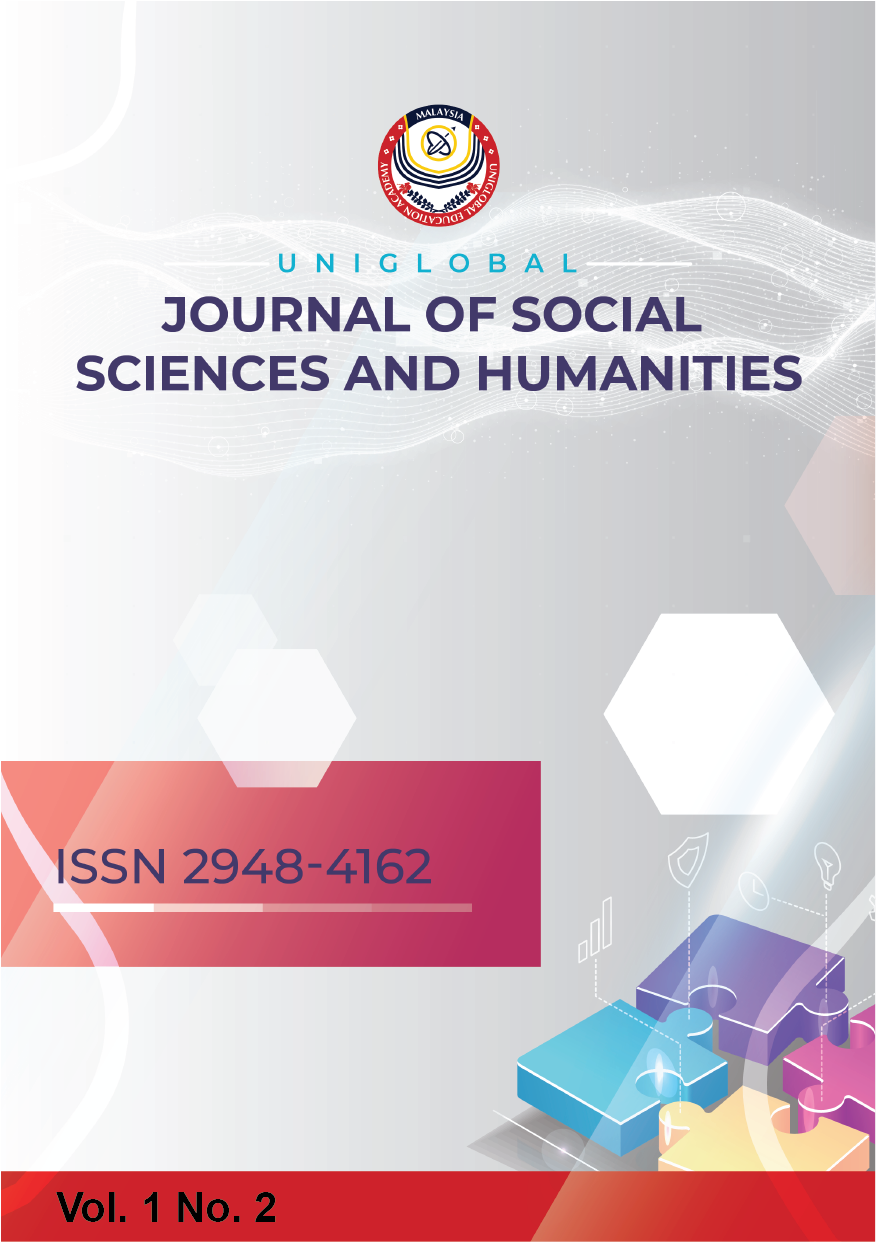Development of Multimedia-Based Vibel Media to Increase Kindergarten Children's Cognitive Learning Interest
DOI:
https://doi.org/10.53797/ujssh.v1i2.10.2022Keywords:
Learning media, learning video, multimedia, interest in learning, cognitive developmentAbstract
This study aims to 1) analyze the need for multimedia-based learning media to increase interest in cognitive learning of group A children in Gugus Ki Hajar Dewantoro Kindergarten, and 2) formulate a design for developing multimedia-based learning video media (vibel) to increase interest in cognitive learning of children in Group A in Ki Hajar Dewantoro's Gugus Kindergarten, 3) Analyzing the feasibility level of multimedia-based learning video media (vibel) to increase children's interest in cognitive learning in Group A in Ki Hajar Dewantoro's Gugus Kindergarten, 4) analyzing the effectiveness of multimedia-based learning video media (vibel) to increase children's cognitive learning interest in Group A at Gugus Ki Kindergarten beat Dewantoro. The type of research is R&D. The development model used in this study is the borg and gall development model with ten development steps. First, the feasibility level of multimedia-based learning media is based on expert validation tests and small-scale trials and then applied to the sample class. Data collection using observation, interviews, questionnaires and documentation. Data analysis techniques include product data analysis, initial data analysis with normality test, and final data analysis with N-gain and t-test. The results of the study are 1) based on needs analysis, learning media is needed that can increase children's cognitive learning interest, and 2) the media developed is a learning video. Learning video media in the form of exposure to images and sounds that contain cognitive material, 3) instructional video media was declared feasible for kindergarten children's learning in the Rembang district based on material expert validation of 90 with appropriate categories. Media expert validation of 88 with appropriate categories, 4) effective learning video media is used to increase the cognitive learning interest of kindergarten children in Rembang. The effectiveness of the learning video is based on a limited product trial and a broad product trial with t-count > t-table and n gain test in a limited test in the effective category.
References
Almara'beh, H., Amer, E. F., & Sulieman, A. (2015). The effectiveness of multimedia learning tools in education. International Journal, 5(12).
Ambarita, H. M. (2015). Pengembangan Multimedia Pembelajaran Interaktif Materi Berhitung Untuk Anak Kelompok A TK Teruna Bangsa. Pendidikan Guru PAUD S-1.
Anderson, L. M., Shinn, C., Fullilove, M. T., Scrimshaw, S. C., Fielding, J. E., Normand, J.... & Task Force on Community Preventive Services. (2003). The effectiveness of early childhood development programs: A systematic review. American journal of preventive medicine, 24(3), 32-46.
Ayu, N. K., & Manuaba, I. S. (2021). Media Pembelajaran Zoolfabeth Menggunakan Multimedia Interaktif untuk Perkembangan Kognitif Anak Usia Dini. Jurnal Pendidikan Anak Usia Dini Undiksha, 9(2), 194-201.
Bredekamp, S. (2014). Effective practices in early childhood education: Building a foundation. Upper Saddle River, NJ: Pearson.
Carson, V., Hunter, S., Kuzik, N., Wiebe, S. A., Spence, J. C., Friedman, A., & Hinkley, T. (2016). Systematic review of physical activity and cognitive development in early childhood. Journal of science and medicine in sport, 19(7), 573-578.
Clyde, C. (2017). Towards a new education system: The victory of the new right?. Routledge.
Essa, E. L., & Burnham, M. M. (2019). Introduction to early childhood education. Sage Publications.
Nazelliana, D., & Hapsari, A. T. (2015). Implementasi penyisipan pesan file ke dalam gambar dengan algoritma huffman. Faktor exacta, 8(1), 53-66.
Renninger, K. A., Hidi, S., Krapp, A., & Renninger, A. (2014). The role of interest in learning and development. Psychology Press.
Satria, T. G., & Egok, A. S. (2020). Pengembangan Etnosains Multimedia Learning Untuk Meningkatkan Kognitif Skill Siswa Sd Di Kota Lubuklinggau. Jurnal Basicedu, 4(1), 13-21.
Sugiyono, P. D. (2019). Metode Penelitian Pendidikan (Kuantitatif, Kualitatif, Kombinasi, R&d dan Penelitian Pendidikan). Metode Penelitian Pendidikan.
Sugiyono, P. D. (2017). Metode penelitian bisnis: pendekatan kuantitatif, kualitatif, kombinasi, dan R&D. Penerbit CV. Alfabeta: Bandung, 225.
Syamsuddin, A., Juniati, D., & Siswono, T. Y. E. (2020). Understanding the problem solving strategy based on cognitive style as a tool to investigate reflective thinking process of prospective teacher. Universal Journal of Educational Research, 8(6), 2614-2620.
Downloads
Published
How to Cite
Issue
Section
License
Copyright (c) 2022 Rahajeng Ayu Hapsari, Mochamad Kanzunnudin, Moch Widjanarko

This work is licensed under a Creative Commons Attribution-NonCommercial-ShareAlike 4.0 International License.



